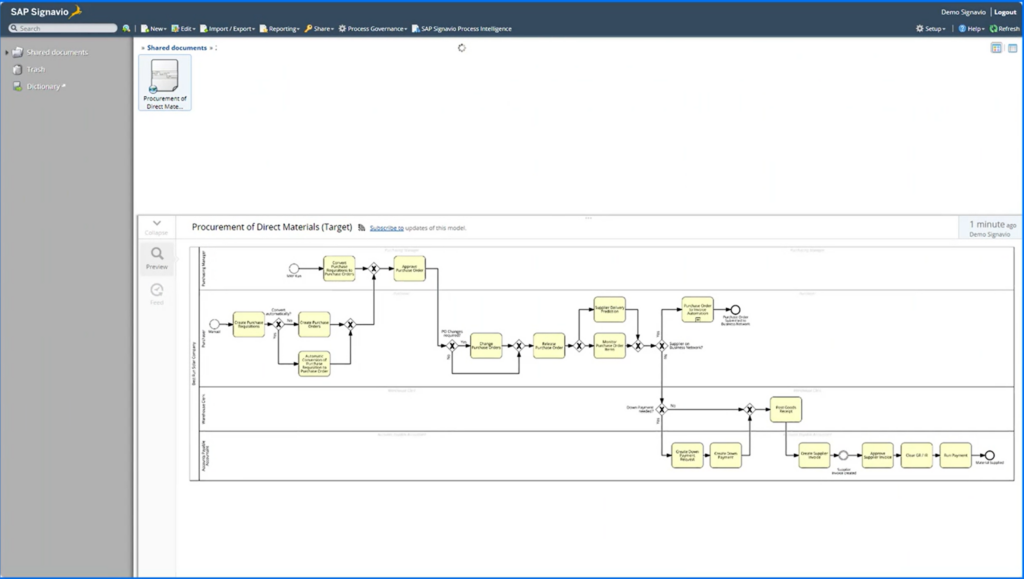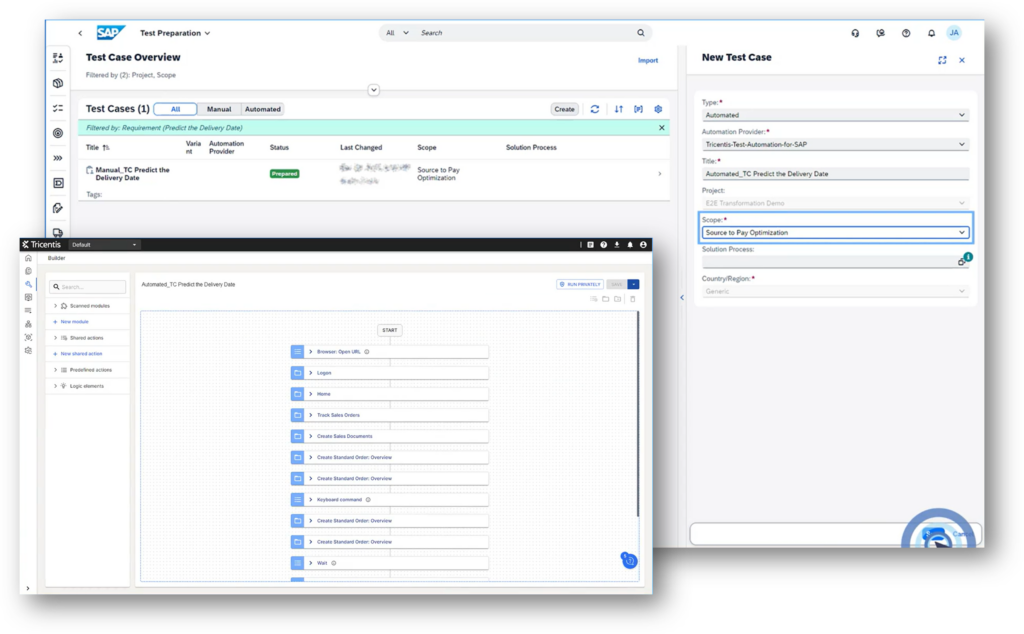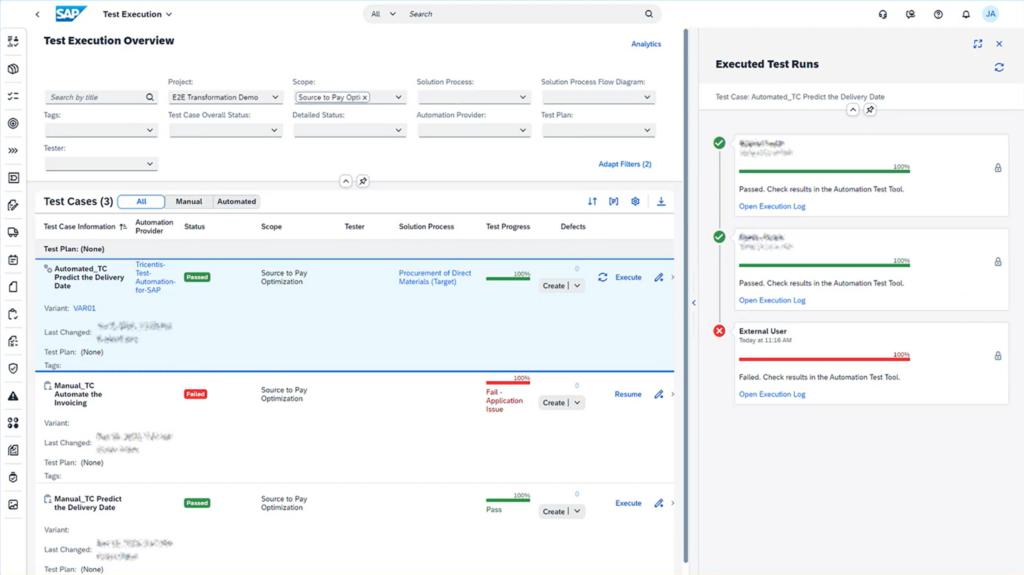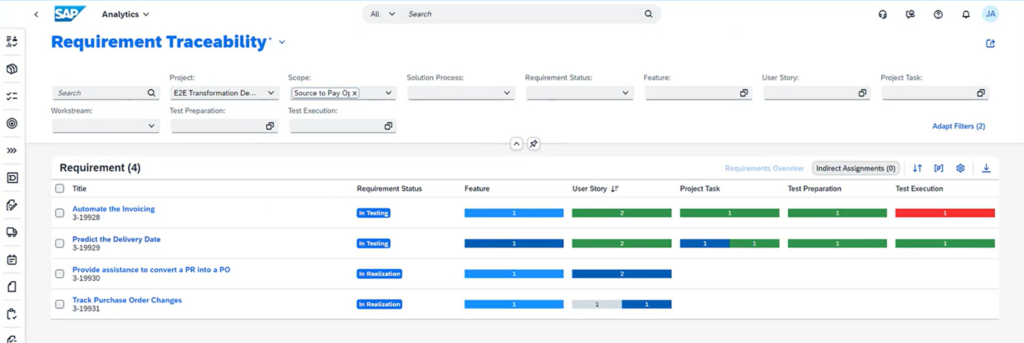In the modern era of AI-based innovations and cloud transitions, businesses face the challenge of managing complex processes across multiple systems — and the rate of change is only accelerating. At the same time, businesses need to ensure that the introduction of new innovations driven by accelerated business transformation doesn’t break existing processes and systems. To ensure that systems are doing what they are built to do, you must conduct continuous testing alongside continuous development.
Why is testing still a pain?

We know that testing is a must, yet many businesses still view testing as an unpleasant chore. Why? Largely because many organizations still approach testing with old-school methods.
The 2021 Global DevSecOps GitLab Survey revealed that most testing is still performed manually. A TechWell survey in 2021 conducted with Tricentis supports these findings, noting that while unit testing may achieve higher automation, end-to-end or system integration testing—where multiple interconnected applications are tested—sees automation rates drop to about 24%. A manual approach often delays releases and new functionalities due to the extensive and costly maintenance required. Consequently, risk coverage is low, with most enterprises achieving only 25% coverage of their critical business functions, indicating inadequate testing focus. In summary, traditional manual testing often leads to slower release cycles, increased costs, and higher business risks.
To overcome these challenges, SAP Test Automation by Tricentis offers a robust solution for continuous automated testing across heterogeneous IT landscapes. SAP Test Automation is integral to SAP’s business transformation engine that incorporates tools like SAP Signavio, where you define new processes to support innovations and optimize existing business processes, and SAP Cloud ALM, where you build, implement, and operate solutions.
Seamlessly map process improvements, implement change, and automate testing
SAP Test Automation by Tricentis is embedded within SAP’s business transformation workflow and allows you to easily define and automate test cases as a tightly integrated step in the process.

To illustrate this, imagine that you want to enhance the functionality of a direct procurement process. Here’s a step-by-step outline of how you can go about this in practice:

- Map process improvements: Begin by mapping out improvements using SAP Signavio. Once done, export the business process modeling notation (BPMN) file and save it locally.

- Import to SAP Cloud ALM: You can import the BPMN file into SAP Cloud ALM with a few simple steps. Once done, you can see the detailed process flow that you created in Signavio directly in SAP Cloud ALM.

- Implement process changes: To begin implementing the new updated process, publish the process in SAP Cloud ALM to create requirements, user stories, and tasks. Developers can monitor progress through the requirement traceability dashboard.

- Automate test cases: When developers have finished, you can use SAP Test Automation by Tricentis to create automated test cases for each new feature. In the above image, you can see a new, completed test case linked to SAP Cloud ALM.

- Execute tests: You can execute the fully automated test run right from within SAP Cloud ALM. The results flow automatically into the system, where defects can be tracked and addressed. Red in the image above indicates errors or failures.

- Production readiness: Once all defects and issues have been resolved and the requirements have been successfully met and tested, you are ready to release the transport into your SAP system, ensuring the feature is ready for production.

Deploying SAP Test Automation with SAP Signavio and SAP Cloud ALM accelerates innovation, mitigates risks, and supports Agile and DevOps methodologies. By adopting this integrated approach, businesses can bring innovations to market faster and optimize their end-to-end processes.
Learn more about how Tricentis provides modern, AI-driven test automation that boosts SAP innovation, or download our e-book The executive guide to accelerating SAP projects with enterprise test automation.